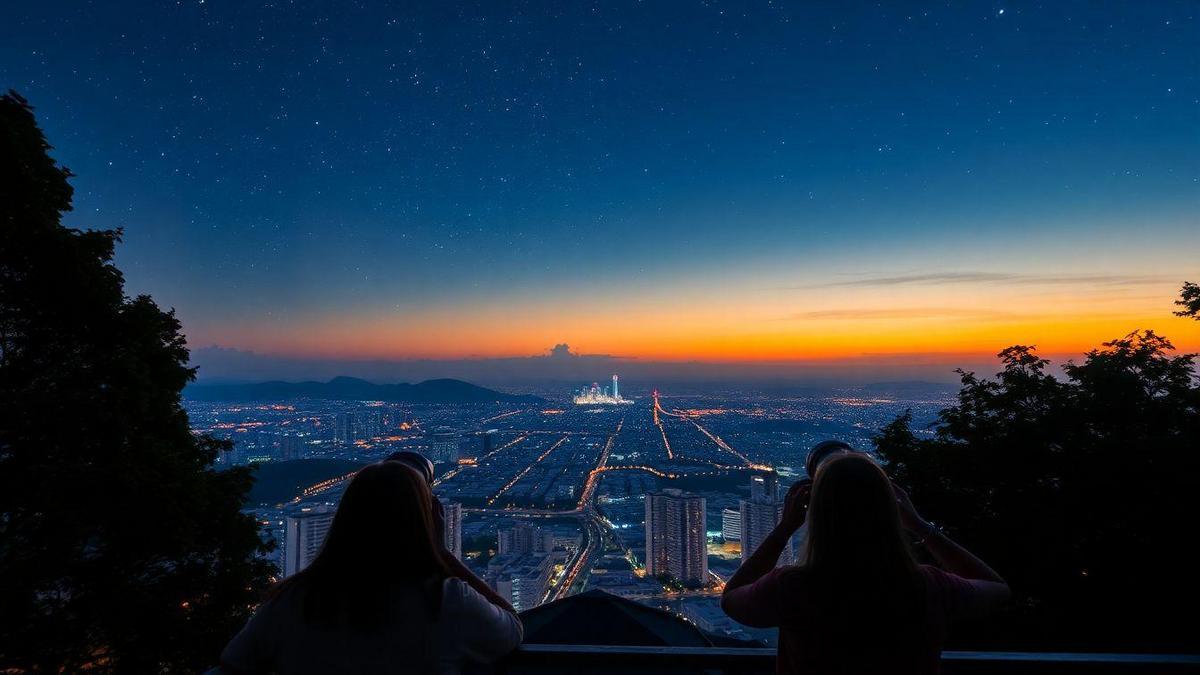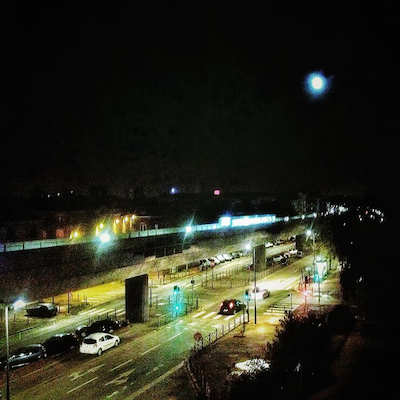
Urban skywatching is a growing practice among astronomy enthusiasts, especially in large cities where light pollution can obscure the beauty of the night sky. Light pollution is caused by excessive artificial lighting, which hinders the observation of celestial objects, impacts local fauna and flora, and affects human health. In an increasingly urbanized world, finding ways to appreciate the cosmos becomes a challenge—but also an opportunity to learn and connect with the universe.
With advances in technology and growing knowledge of the sky, various techniques and tools have been developed to allow astronomy lovers to enjoy their passion even in urban settings. In this article, we explore how urban skywatching techniques work, the advantages of overcoming light pollution in astronomy, and how to practice it effectively, offering a new perspective on the night sky.
How Urban Skywatching Techniques Work
Urban skywatching techniques are designed to maximize the stargazing experience even in areas with high light pollution. One of the main strategies is choosing the right observation location. While many believe the only solution is to leave the city, there are specific spots within urban centers that offer better sky views. Parks, plazas, and open areas are often less affected by excessive lighting and can be great places to observe stars and constellations.
Another important technique is using proper filters and equipment. Telescopes and binoculars with specific filters help block unwanted light, allowing observers to see details that would otherwise remain hidden. Additionally, astronomy apps help identify stars, planets, and constellations, making the experience more interactive and educational. These apps use GPS and augmented reality to guide users during their observations, making the practice more accessible.
Adapting your eyes to darkness is a frequently underestimated technique. Human eyes take time to adjust to the dark, and this process can be disrupted by exposure to artificial light. Observers are advised to avoid looking at bright lights before starting skywatching. Using red-light flashlights helps preserve night vision without causing visual shock.
Finally, education and awareness about light pollution are essential for promoting urban skywatching. Astronomy groups and environmental organizations have been working to raise awareness of light pollution’s effects and the importance of preserving dark skies. By educating the public on the need to reduce excessive lighting, we can create a better environment for astronomical observation and help protect local biodiversity.

Advantages of Overcoming Light Pollution in Astronomy
Overcoming light pollution brings several significant advantages to the practice of astronomy, especially for urban observers. One of the main benefits is improved observation quality. With less artificial light interference, celestial bodies appear more clearly, allowing observers to enjoy the night sky’s full beauty. This includes fainter stars, nebulae, and even distant galaxies that would otherwise be hidden by light pollution.
Additionally, reducing light pollution contributes to better health and well-being. Studies show that excessive exposure to artificial light can affect sleep and mental health. By promoting a darker night sky, people can enjoy a more relaxing environment conducive to rest while encouraging outdoor activities that support physical and mental health. Skywatching can also serve as a form of meditation and connection with nature.
Another advantage of overcoming light pollution is its positive impact on biodiversity. Artificial light can disorient nocturnal animals, affecting their behavior and reproduction. Reducing light pollution benefits urban ecosystems, allowing local wildlife to thrive. This not only enriches urban biodiversity but also creates a more balanced and healthy environment for humans.
Finally, overcoming light pollution can foster a sense of community and collaboration among astronomy enthusiasts. As more people become aware of the importance of dark skies, they can unite to organize observation events, workshops, and awareness campaigns. This collaboration strengthens social bonds and promotes greater interest in science and conservation, resulting in a more informed and engaged society.
How to Practice Urban Skywatching Effectively
Practicing effective urban skywatching involves strategies that enhance the stargazing experience.
Choose an appropriate location: Look for areas within the city that are less illuminated, such as parks or open spaces where light pollution is minimized. Ensure the location is safe and accessible, especially at night.
Use appropriate equipment: Invest in binoculars or telescopes with filters that block unwanted light. Also, bring a star map or use astronomy apps to help identify constellations and celestial objects.
Adapt your eyes to the dark: Allow your eyes to adjust to the darkness for at least 20 minutes before observing. Avoid looking at bright lights and use red-light flashlights to preserve your night vision.
Join astronomy events: Get involved with local astronomy groups and attend group observation events. This offers learning opportunities and the chance to meet others with similar interests.
Raise awareness: Share your experience and knowledge about light pollution and the importance of skywatching. Get involved in campaigns that promote reducing excessive lighting in your community.
Document your observations: Keep an observation journal to record your experiences, the stars and planets you’ve seen, and any interesting phenomena. This can help you improve your skills and make the experience more rewarding.
By following these practices, you can maximize your urban skywatching experience and contribute to a more astronomy-friendly environment.
Community Engagement and Advocacy for Dark Skies
As urban skywatching gains popularity, community engagement and public advocacy play a vital role in protecting the night sky. Local initiatives can have a meaningful impact on reducing light pollution and fostering a culture of stargazing. By organizing public observation nights, astronomy clubs, or educational workshops, communities can raise awareness about the value of preserving dark skies.
One effective way to advocate for darker skies is by promoting responsible outdoor lighting. Encouraging the use of shielded light fixtures, motion sensors, and warmer light tones can greatly reduce unnecessary skyglow. Collaborating with local governments and urban planners to implement smart lighting policies is another powerful way to influence long-term change in public infrastructure.
Schools and educational institutions also play a crucial role in promoting skywatching awareness. By incorporating astronomy into their curricula and hosting telescope nights, they can spark curiosity and inspire the next generation of sky enthusiasts. These experiences can lead to a deeper appreciation for science, nature, and the environment.
Finally, participating in global events like International Dark Sky Week or citizen science projects allows individuals to contribute to data collection and global awareness efforts. These collaborative movements unite people across the world in the shared goal of preserving our access to the stars, even from the heart of urban environments. Do not miss.

Did You Enjoy Learning About Urban Skywatching?
Learning about urban skywatching and techniques to overcome light pollution is an incredible opportunity to connect with the cosmos—even in the hustle and bustle of city life. By adopting conscious practices, you can enjoy the beauty of the night sky and help preserve the environment.
Astronomy is not just a science, but also a form of art and meditation. Looking at the stars connects you with something greater and reveals the wonder of the universe around us. Don’t miss the chance to explore and appreciate the night sky!
Frequently Asked Questions
How can I see stars in the city?
You can use special filters that block unwanted light. Also, choose a darker location like a park.
What is light pollution?
Light pollution is excessive artificial light that interferes with our view of the sky. It makes it harder to see stars and other space objects.
What are the best times for urban skywatching?
The best times are at dusk or early morning. City lights are dimmer during those hours.
Are there apps that help with urban skywatching?
Yes, many apps show constellations and planets. They help guide you on what to look for in the sky.
How can I reduce light pollution at home?
Use low-intensity LED lights and install blackout curtains. That helps reduce the light coming from your house.

